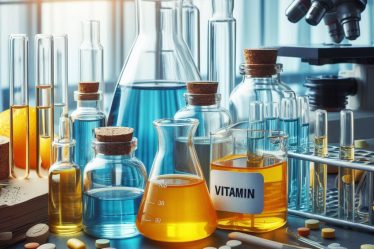
Water, often dubbed the “liquid of life,” is far more than just a simple combination of hydrogen and oxygen molecules. It’s a complex substance with unique properties that make it indispensable for all life forms. This article aims to delve into the intricate chemistry of water, exploring its molecular structure, unique characteristics, and irreplaceable role in ecosystems. Whether you’re a student grappling with chemical equations, a teacher seeking to enrich your curriculum, or a tutor aiming to break down complex topics, this comprehensive guide is your go-to resource.
Check out 8 Exciting Science Experiments for Kids.
Introduction to the Chemistry of Water
As we embark on this educational journey, laying the groundwork for what makes water’s chemistry so compelling is essential. Water is not just a transparent, odorless, and tasteless liquid; it’s a chemical masterpiece that holds the secret to life. Composed of two hydrogen atoms covalently bonded to an oxygen atom, water’s molecular structure is deceptively simple, yet it gives rise to a host of unique and vital properties. From its unparalleled solvent capabilities to its role in regulating Earth’s climate, the chemistry of water is a subject that captivates scientists, educators, and students alike. In this guide, we will dissect the molecular intricacies, explore chemical reactions, and delve into the real-world applications of water chemistry.
Discover your ideal chemistry tutor at meet’n’learn and skyrocket your understanding to new heights!
The Basic Chemistry of Water: Unveiling the Complexity of H2O
Water may seem straightforward, but its simple appearance belies a complex chemical structure. This section will guide you through the foundational aspects of water’s chemistry, from its molecular makeup to the forces that hold it together. Understanding these elements is crucial for grasping water’s unique properties and its indispensable role in life as we know it.
Ready to unravel The Greatest Discoveries in Biology?
Molecular Structure
The molecular structure of water serves as the foundation for its unique properties. Composed of two hydrogen atoms and one oxygen atom, the formula H2O is universally recognized. These atoms are connected by covalent bonds, which are inherently polar. This polarity results from the oxygen atom’s higher electronegativity, which means it has a stronger pull on the shared electrons. This leads to a partial negative charge on the oxygen atom and partial positive charges on the hydrogen atoms, setting the stage for water’s remarkable characteristics.
Hydrogen Bonding
One of the most fascinating aspects of water chemistry is the role of hydrogen bonding. These are weak interactions between the partially negative oxygen atom of one water molecule and the partially positive hydrogen atom of another. Hydrogen bonds are the linchpins behind many of water’s unique properties, including its high surface tension, elevated boiling point, and ability to act as a solvent for a wide range of substances.
How is a Hydrogen Bond Formed?
Electron Configuration
Another key factor that contributes to water’s stability and unique properties is its electron configuration. The oxygen atom has six electrons in its outer shell and requires two more to achieve a stable configuration. Hydrogen, each with a single electron, fills this requirement. This results in a stable electron configuration that not only contributes to the molecule’s stability but also influences its chemical behavior and interactions with other substances.
Comparison of Water with Other Molecules
| Molecule | Type of Bond | Boiling Point (°C) | Unique Properties |
|---|---|---|---|
| Water (H2O) | Polar Covalent | 100 | High surface tension, high boiling point |
| Methane (CH4) | Non-Polar Covalent | -161 | Low boiling point |
| Ammonia (NH3) | Polar Covalent | -33 | High polarity |
How is a Covalent Bond Formed, and how can we differentiate between Ionic and Covalent Bonds?
Unique Properties of Water: The Anomalies That Make It Essential
Water’s unique properties set it apart from other substances and make it a critical component for life on Earth. From its ability to exist in three different states to its role as a universal solvent, water’s unique characteristics directly result from its complex chemistry.
States of Water
Water is one of the few substances that can exist naturally in three states: solid, liquid, and gas. Each state has its own set of properties governed by the arrangement and movement of its molecules. For example, in its solid state as ice, water molecules are arranged in a lattice structure, which makes it less dense than liquid water.
Cohesion and Adhesion
Two other remarkable properties of water are cohesion and adhesion. Cohesion refers to the attraction between water molecules, which is why water forms droplets. Adhesion is the attraction between water and other substances, evident when water climbs up a plant stem or sticks to a glass surface.
High Specific Heat Capacity
Water has a high specific heat capacity, meaning it can absorb a lot of heat without a significant temperature change. This property is crucial in regulating Earth’s climate and allows organisms to withstand temperature fluctuations better.
Universal Solvent
Thanks to its polarity, water is often called the “universal solvent.” It can dissolve many substances, from salts to sugars, making it a vital component in biological systems.
How to calculate the Concentration of a Solution?
What are the Unique Properties of Water?
- High boiling and freezing points compared to other substances of similar size.
- Capillary action due to cohesion and adhesion.
- Excellent thermal conductor, facilitating heat transfer.
- Lower density as a solid, which is why ice floats on water.
Discover the fundamentals of Electrochemistry and Redox Reactions.
Water’s Role in Ecosystems: The Lifeline of the Planet
Water is not just a chemical compound; it’s the lifeline that sustains ecosystems and, by extension, life on Earth. Its unique properties make it indispensable in various biological and geological processes. In this section, we’ll explore how water chemistry plays a pivotal role in the functioning of ecosystems.
Water Cycle
The water cycle is a fundamental ecological process driven by the sun’s energy. It involves the evaporation of water from Earth’s surface, condensation into clouds, and eventual precipitation back to the surface. This cycle is essential for distributing water and nutrients across the planet.
Water as a Habitat
Water serves as a habitat for a myriad of organisms, from microscopic plankton to massive whales. Its chemical properties, such as high heat capacity and solubility, create stable environments supporting diverse life forms.
Water in Photosynthesis
Water is a key reactant in photosynthesis, the process by which plants convert sunlight into energy. The splitting of water molecules provides the electrons needed to convert carbon dioxide into glucose, thereby sustaining plant life and contributing to the atmosphere’s oxygen content.
Water in Human Activities
From agriculture to industrial processes, water’s unique chemical properties make it indispensable in human activities. Its role as a solvent is particularly crucial in various industrial applications, including the manufacturing of chemicals and the treatment of waste.
Struggling with biology topics? Explore our extensive collection of biology educational blog posts designed to simplify complex concepts for you. Whether it’s photosynthesis, the intricacies of green algae, understanding bacteria and viruses, or delving into the fascinating world of genetics and cells, our resources have got you covered. Expand your knowledge and enhance your learning journey with us today.
Water’s Role in Ecosystems
- Essential for the water cycle, distributing nutrients and water.
- Provides habitat for diverse marine and freshwater organisms.
- Key reactant in photosynthesis, supporting plant life and oxygen production.
- Crucial in human activities, from agriculture to industry.
The basic of Polymers.
Water Quality and Pollution: A Chemical Perspective
Water’s unique properties make it invaluable for life, but various forms of pollution can compromise its quality. Understanding the chemical aspects of water quality is essential for safeguarding this precious resource. This section delves into the chemical indicators of water quality and the impact of pollutants.
pH Levels
The pH level is a critical indicator of water quality. It measures the acidity or alkalinity of water and can affect the solubility of minerals and gases and the health of aquatic life. A pH level of 7 is considered neutral, while levels below 7 indicate acidity, and above 7 indicate alkalinity.
Explore Acids, Bases, and pH.
Chemical Contaminants
Various chemical contaminants can degrade water quality, including heavy metals like lead and mercury, organic compounds such as pesticides, and inorganic ions like nitrates and phosphates. These substances can have detrimental effects on both human health and ecosystems.
Common Chemical Contaminants and Their Effects
| Contaminant | Source | Effect on Ecosystem | Effect on Human Health |
|---|---|---|---|
| Lead | Industrial waste, old pipes | Toxic to aquatic life | Neurological damage |
| Mercury | Coal combustion, mining | Accumulates in food chain | Neurological and kidney damage |
| Nitrates | Agricultural runoff | Algal blooms, oxygen depletion | Methemoglobinemia |
Water Treatment
Water treatment processes aim to remove or neutralize chemical contaminants. Techniques such as filtration, chlorination, and reverse osmosis are employed to ensure that water meets quality standards for consumption and ecological sustainability.
Ethanol and Alcohols in Chemistry explained.
The Educational Importance of Understanding Water Chemistry
Grasping the chemistry of water is not just an academic exercise; it’s necessary for anyone interested in science, environmental studies, or public health. This section will discuss why understanding water chemistry is crucial in educational settings and how tutors can facilitate this learning.
Curriculum Relevance
Water chemistry is a staple in various educational curricula, from high school chemistry to environmental science courses. Understanding the molecular structure, pH levels, and unique properties of water provides a foundational knowledge that is applicable in multiple scientific disciplines.
Real-World Applications
Learning about water chemistry has direct real-world applications. Whether it’s understanding the impact of chemical pollutants on water quality or the role of water in biological processes, this knowledge equips students to engage with pressing environmental and health issues.
How to calculate Molar Mass and Mass Fraction?
The Role of Tutors in Learning Water Chemistry
Given the complexity of the subject, tutors can play a significant role in breaking down the intricate details of water chemistry. They can provide customized learning experiences, from explaining the basics of hydrogen bonding to diving deep into the chemical reactions that occur in water treatment processes.
Looking for a chemistry tutor? Enter “chemistry tutor Glasgow” or “chemistry teacher Sheffield” on your preferred tutoring platform, such as meet’n’learn to find a teacher who can meet your specific needs.
If you thrive in group learning environments, search “chemistry classes London” or “chemistry lessons Manchester” online to discover local schools offering chemistry lessons.
Closing Remarks
Water is much more than just H2O; it’s a complex chemical entity with unique properties that make life on Earth possible. From its role in ecosystems to its importance in education, understanding the chemistry of water is crucial for anyone interested in science, health, or the environment. We encourage you to delve deeper into this fascinating topic and continue your educational journey.
Introduction to the Periodic Table and how to memorize it.
Frequently Asked Questions
1. What is the molecular structure of water?
Water is composed of two hydrogen atoms bonded to one oxygen atom, forming the chemical formula H2O. The angle between the hydrogen-oxygen-hydrogen atoms is approximately 104.5 degrees.
2. Why is water called the “universal solvent”?
Water is often called the “universal solvent” due to its ability to dissolve many substances, including salts, sugars, and gases. This is largely because of its polarity, which allows it to form hydrogen bonds with other molecules.
3. How does water’s high heat capacity affect the environment?
Water’s high heat capacity allows it to absorb and store large amounts of heat, which helps regulate Earth’s climate. It also creates more stable environments in aquatic habitats, benefiting the living organisms.
4. What are the common chemical contaminants in water?
Common chemical contaminants include heavy metals like lead and mercury, organic compounds like pesticides, and inorganic ions like nitrates and phosphates.
5. How is water quality measured?
Water quality is commonly measured using indicators like pH levels, turbidity, and the presence of chemical contaminants. Various tests can be conducted to assess these factors.
6. What role do tutors play in understanding water chemistry?
Tutors can provide customized learning experiences that help students understand the complex aspects of water chemistry, from its molecular structure to its role in ecosystems.
7. Why is understanding water chemistry important in education?
Understanding water chemistry is crucial for science, environmental studies, or public health students. It provides foundational knowledge that is applicable in multiple scientific disciplines and has real-world implications.
Discover your ideal chemistry tutor at meet’n’learn and skyrocket your understanding to new heights!


